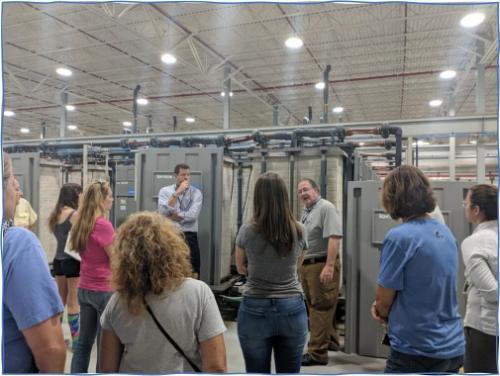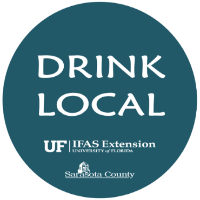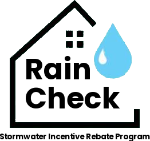![a drop of water falls from a faucet into a waiting glass. [credit: pixabay.com]](/media/sfylifasufledu/sarasota/images/banner1650x470/2021_Water_webDrinkWaterFaucetGlass01_pixabayCROP1650x470.jpg)
Drink Local
Sarasota County Drinking Water
Sarasota County’s drinking water meets and exceeds all Safe Drinking Water Act standards. So, skip the plastic bottle and drink local!
Sarasota County's drinking water comes from the following sites:
| Location | Percent of Supply | Water Source |
| T. Mabry Carlton Jr. Treatment Facility | 9 | Wellfield, 16 wells, draw from Intermediate and Floridan aquifers |
|
University Parkway Jacaranda Water Treatment Facility |
5 |
Wellfield with 7 wells draw from the Floridan aquifer Wellfield with 7 wells draw from the Floridan aquifer |
| Purchase from Manatee County | 23 | Manatee River and wells draw from the Floridan aquifer |
| Purchase from Peace River/Manasota Regional Water Supply Authority | 63 | Peace River and wells draw from the Floridan aquifer |
The table above shows the percent of drinking water contributed from each local source. Where do you get your drinking water? Check out your Drinking Water Quality reports for all the water utilities in Sarasota County.
- City of Sarasota
- Sarasota County
- City of Venice
- City of Englewood
- City of North Port
- Longboat Key (purchases wholesale from Manatee County)
- Pluris of Southgate (purchases wholesale from Sarasota County)
Keeping Our Water Safe

The Carlton plant utilizes a desalination process called electrodialysis reversal, or EDR, to treat the brackish well water retrieved from the intermediate and Upper Floridan Aquifers. The Carlton EDR plant is one of the largest of its kind in the world. The process is highly efficient, recovering approximately 85 gallons of drinking water for every 100 gallons processed. The plant has a design capacity of 12 mgd. Key Water Consumption permit stipulations include the county’s obligations to: follow specific construction specifications for new wells, manage chloride concentration trigger levels, submit water audits, and implement hydrologic, hydrogeologic and wetland monitoring plans.
Bottle or Tap?
Many Floridians highly value safe, clean drinking water. There is a negative stigma surrounding the quality of our tap water, though it is perfectly safe to drink. The "solution" for many is to switch to bottled water. More than a third of Floridians have reported bottled water as their primary source of drinking water (Odera and Lamm, 2015). That means one out of every three Floridians either believes that Florida water tastes bad, is not safe, or bottled water is a better alternative (Hu et al. 2011). However, this is often found not be the case, and is certainly not the case for unincorporated Sarasota County. Further, the use of bottled water contributes to high rates of plastic pollution and wasted resources.
Did you know that it takes 1.5 liters of water to produce the average water bottle? That is three times the amount of water you would be able to drink from the standard 16.8-ounce bottle. Additionally, bottled water creates a disconnect between its consumers and their local water resources, making them less likely to invest in nearby projects to increase tap water quality (Hayes).
Did you know that bottled water must meet the same standards as your local tap water? There are not stricter standards set for bottled water. In fact, bottled water manufacturers undergo much less scrutiny than your local utility. Bottled water quality is regulated under the U.S. Food and Drug Administration, while your tap water is overseen by the U.S. Environmental Protection Agency (EPA). Your local utility must report data to the Florida Department of Environmental Protection (overseen by the EPA) regularly as set under the standards written in the Safe Drinking Water Act and the Florida Safe Drinking Water Act.
Safe Drinking Water Act
 Drinking water from our taps follows a strict set of standards regulated under the Environmental Protection Agency and the Florida Department of Environmental Protection. In 1974, the Environmental Protection Agency passed the Safe Drinking Water Act.
Drinking water from our taps follows a strict set of standards regulated under the Environmental Protection Agency and the Florida Department of Environmental Protection. In 1974, the Environmental Protection Agency passed the Safe Drinking Water Act.
The legislation was drafted to protect public health by protecting drinking water and its various surface and underground sources. It accounts for the regulation of more than 90 potential contaminants, and only allows a miniscule amount of some to be present in the drinking water. You can view the allowable thresholds for each contaminant here and the logic behind them here.
Sarasota County goes above and beyond the set requirements with each passing year, meaning that your water is safe to drink.
Safe and Tasty
 Sarasota County's drinking water supply not only consistently exceeds expectations but also tastes great. In fact, Sarasota County has continuously beat competing utilities from Manatee, Desoto, Charlotte, and Hardee counties for drinking water taste.
Sarasota County's drinking water supply not only consistently exceeds expectations but also tastes great. In fact, Sarasota County has continuously beat competing utilities from Manatee, Desoto, Charlotte, and Hardee counties for drinking water taste.
If you still find the water not to your liking, consider the following tip to improve its flavor. Try filling up a glass bottle or carafe with tap water and put it in the fridge for 24 hours, letting the chlorine off-gas. This will relieve the water of any chlorine odor and taste.
No matter how you drink it, choosing tap keeps bottles out of our landfill and our local environment.
- www.epa.gov/sdwa
- Sarasota County Extension Blogs:
RainCheck is a rebate program meant to incentivize homeowners to install small-scale best management practices for stormwater management.
Subscribe to "The Current" newsletter to get the latest in water resources news.
![screen shot of top portion of the current newsetter, with water resources program information. [credit: uf/ifas extension sarasota county]](/media/sfylifasufledu/sarasota/images/water/2025_Water_screenTheCurrentNwsltr_juneCROP1000x859-181x207.png)

